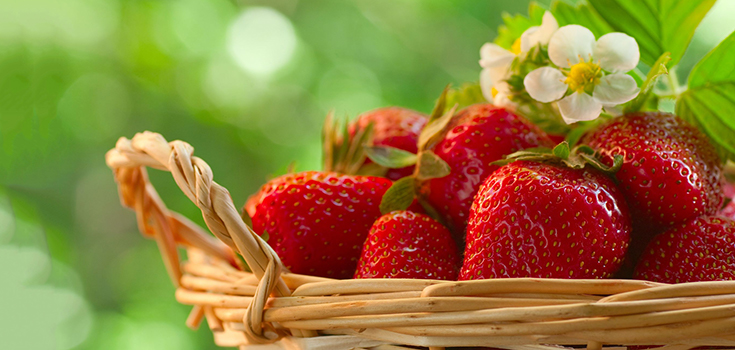EWG Releases 2016 “Dirty Dozen” List of Pesticide-Laden Produce
EWG Releases 2016 “Dirty Dozen” List of Pesticide-Laden Produce
Plus the 15 cleanest produce
For the report, the EWG analyzed test results of more than 35,200 samples of fruits and vegetables taken by the USDA and the FDA.
Each year, the Environmental Working Group (EWG) releases its “Dirty Dozen” listof the fruits and vegetables that rank highest in pesticide residues . This year, strawberries top the list.
For the first time, strawberries outrank apples, which previously headed the list for 5 years running .
For the report, the EWG analyzed test results of more than 35,200 samples of fruits and vegetables taken by the USDA and the FDA. Nearly all of the non-organic strawberry samples – at least 98% – contained detectable levels of pesticides, with 47% having residues of 10 or more pesticides. Some of the strawberries were found to have residues from 17 different pesticides.
Some of the chemicals found on the strawberries have been linked to cancer, reproductive and developmental damage, hormone disruption, and neurological problems, according to the EWG.
Sonya Lunder, EWG Senior Analyst, said in a statement obtained by:
“It is startling to see how heavily strawberries are contaminated with residues of hazardous pesticides, but even more shocking is that these residues don’t violate the weak U.S. laws and regulations on pesticides in food.
The EPA’s levels of residues allowed on produce are too lax to protect Americans’ health. They should be updated to reflect new research that shows even very small doses of toxic chemicals can be harmful, particularly for young children.”
2016’s Dirty Dozen Strawberries Apples Nectarines Peaches Celery Grapes Cherries Spinach Tomatoes Sweet bell peppers Cherry tomatoes Cucumbers
More than 98% of strawberries , peaches, nectarines, and apples tested positive for at least 1 pesticide residue. EWG said the average potato had more pesticides by weight than any other produce .
The group also reportedly said thatwhile hot peppers and leafy greens like kale and collard greens didn’t meet the criteria to be ranked on the list, toxic insecticides were found on some of the samples.
The EPA tried to assure the public that the fruits and vegetables on the “Dirty Dozen” list are perfectly safe to eat. The agency said on its website:
“We perform dietary risk assessments to ensure that all tolerances established for each pesticide are safe. These assessments account for the fact that the diets of infants and children may be quite different from those of adults and that they consume more food for their size than adults.”
In a statement tothe Alliance for Food and Farming took issue with the EWG’s report, referring to a 2011 study in the Journal of Toxicology that disputed the methodology of a 2010 EWG report. The alliance emphasized that “residues do not pose a safety concern.”
“Fruits and vegetables are important for your health. But for those on the Dirty Dozen, we recommend buying the organic versions if you want to avoid pesticides on your food. You can feel confident that conventionally grown fruits and veggies on the Clean Fifteen list have very little pesticide contamination.”
2016’s Clean Fifteen
Which fruits and vegetables made the Clean Fifteen, you ask? Take a look:
Avocado Sweet corn Pineapples Cabbage Sweet peas (frozen) Onions Asparagus Mangoes Papayas Kiwi Eggplant Honeydew melon Grapefruit Cantaloupe Cauliflower| About Julie Fidler: | |
| Julie Fidler is a freelance writer, legal blogger, and the author of Adventures in Holy Matrimony: For Better or the Absolute Worst. She lives in Pennsylvania with her husband and two ridiculously spoiled cats. She occasionally pontificates onher blog. | |
Other Popular Stories:



Post a Comment